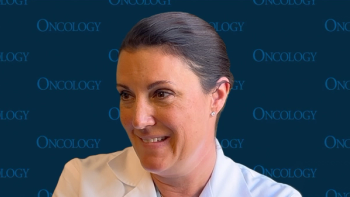
Several Cancer Biosimilars Appear Clinically Indistinguishable Vs Reference Products
Findings from a systematic review that evaluated bevacizumab, trastuzumab, and rituximab vs respective biosimilars highlighted little difference in outcomes between treatment options.
Patients who were treated with cancer biosimilars and underwent extensive clinical evaluations experienced indistinguishable efficacy compared with reference products across drugs, disease types, and outcomes, according to a results from a systematic review published in JAMA Oncology.
Of the 31 biosimilar studies and 3 reference products across 7 subgroups included in the analysis, no differences in surrogacy efficacy were observed compared with the reference drugs. Investigators included 6 reference drug trials and reported that biosimilar studies often included more patients (397 vs 302), were more likely to be randomized vs single-group observational studies (100% vs 50%), and double blind than open label (84% vs 17%).
Investigators initially identified 184 studies, and 42 remained after exclusion criteria. An additional 11 studies were excluded after final review. The review included 12,310 patients.Overall, 21 studies had a low risk of bias, 2 had a high risk of bias, and 2 had bias that was unclear. Among the reference trials, 11 comparing bevacizumab (Avastin) with a biosimilar, 9 used trastuzumab (Herceptin), and 11 used rituximab (Rituxan). Of the studies examined, 12 have led to FDA approvals.
The efficacy meta-analysis investigated 3 originator drugs in 6 disease settings, including non–small cell lung cancer (NSCLC), metastatic colorectal cancer (mCRC), ERBB2-positive early breast cancer, ERBB2-positive metastatic breast cancer, follicular lymphoma, and diffuse large B-cell lymphoma (DLBCL).
Among the comparing bevacizumab to a biosimilar, 6 had patients with NSCLC and 5 had a population with mCRC. NSCLC reported overall response rate (ORR) as a primary end point. Three mCRC trials reported ORR data, and 1 trial reported pharmacokinetic profile as an end point . An additional mCRC trials used disease control rate, and 2 used progression-free survival (PFS) as an end point. The meta-analysis showed the biosimilars were indistinguishable from bevacizumab in terms of ORR and PFS.
Of the trastuzumab studies, 4 had patients with ERBB2-positive metastatic breast cancer and 5 had a population with ERBB2-positive early breast cancer. All trials in the combined studies reported ORR as the primary end point, with 7 trials using pathological complete response rate as a primary end point. No difference between trastuzumab and biosimilars in terms of efficacy outcomes were reported. Those with metastatic breast cancer had no heterogeneity, although those with early breast cancer did (P = .04). When the 2 studies were removed that did not use pathological complete response rates, investigators found identical results (P = .13).
For the rituximab studies, 7 studies concerned follicular lymphoma, 3 had a group with DLBCL, and 1 focused on chronic lymphocytic leukemia (CLL). Despite including CLL in the reported sample, it was not included in the meta-analysis. ORR was the primary end point of all included studies with the exception of 1 that reported ORR with pharmacokinetics as the primary end point. The investigators did not find a difference in ORR between rituximab and the biosimilar, and none had heterogeneity.
Reference
Bloomfield D, D'Andrea E, Nagar S, Kesselheim A. Characteristics of clinical trials evaluating biosimilars in the treatment of cancer: a systematic review and meta-analysis. JAMA Oncol. 2022. doi:10.1001/jamaoncol.2021.7230
Newsletter
Stay up to date on recent advances in the multidisciplinary approach to cancer.


















































































